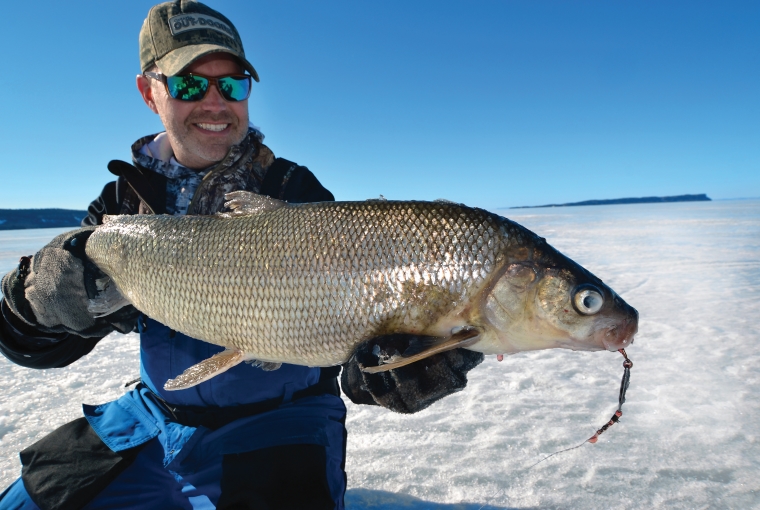
From inside the darkened shelter we could see through the gin-clear waters of Lake Superior to bottom, 20 feet below. My wife, Corine, and I were targeting whitefish, and a massive school of smelt had just moved in. They swam lazily about for several minutes, then suddenly went from relaxed mode to panic, and in an instant, were gone.
“Maybe a school of whitefish chased them off,” said Corine, barely finishing her sentence before the flasher screen lit up. We looked down the hole to see five large whitefish circling the bottom. Like hungry sharks, they circled our baits, waiting for an opportunity to strike. It was only seconds before one lashed out at my seductively dancing Hopkins spoon, and after a brief battle, a chunky whitefish was flopping on the ice.
Whitefish on Lake Superior are one of our favourite ice fishing pursuits. They’re plentiful, grow big, are generally eager to bite, and are one of the best-eating fishes you’ll find.
Where to fish – North Superior hot spots
Anglers can target whitefish at locations along Superior’s north shore. I generally focus around Thunder Bay and Nipigon Bay, and the Lakehead Region Conservation Authority offers several Lake Superior access points for a nominal fee.
The Silver Harbour and Mackenzie Point conservation areas are each a half-hour drive east of the city of Thunder Bay, allowing anglers access to Thunder Bay, with Little Trout Bay about 30 minutes south of town. All of these areas can produce whitefish and other species.
Heading further east to Nipigon Bay, the area around Kama Point is a popular destination. I travel as far east as Mountain Bay, about 30 minutes west of the town of Schreiber. The Gravel and Little Gravel rivers enter Superior here and the large Mountain Bay area is another whitefish hotspot, as well as a great multispecies destination.
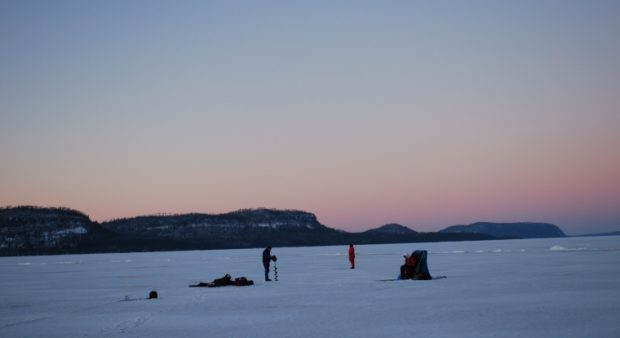
Structure
Whitefish can be found in a wide variety of habitats, such as sandy flats, mid-lake humps, and along steep ledges. They really can be found anywhere but it may take some research and exploring. Once you locate them, you can generally catch fish there year after year.
I like to fish sandy flats that have some aquatic vegetation and are near rocky outcroppings, and typically at around 20 feet deep. Schooling whitefish seem to cruise along the edges of the flats looking for food. One location we fish near a rivermouth has a steep drop, down to 60 feet in a relatively short distance. They cruise the bottom edge of this steep ledge in search of food.
If you have a proven location, it can be worth sitting and waiting for a school to pass by, but if you’re exploring new country or haven’t seen fish for awhile, it’s smart to explore. I like to punch a dozen or so holes, and if I don’t mark fish after an hour or so, I’ll likely move until I’ve worked them all. If you find a hotspot or an area with vegetation, mark it on a GPS so you can return to it.
Whitefish will root through sediment to eat smelt and other baitfish, invertebrates, zooplankton, snails, aquatic insects, larvae, and pretty much anything else they can find. Creatures like diporeia, shrimp-like crustaceans that live in sandy bottom sediments, are common in Superior and are a food source.
Top baits
The Williams Ice Jig is a light, flashy spoon that’s near the top of my list. I like to fish tight to bottom for these bottom-feeding fish, stirring up mud as I jig. If the spoon is tipped with a minnow and the fish are hesitant and don’t hit or chase the bait immediately, I’ll leave the spoon stationary and subtly jiggle the rod. This gives the spoon a gentle action they can’t resist.
Next are the Hopkins and Acme Kastmaster — with their weight and profile they fall quickly, great for when you mark fish and want to get to them before they disappear. The Hopkins and Kastmaster don’t have the sexy action of the Williams, but they most certainly catch fish.
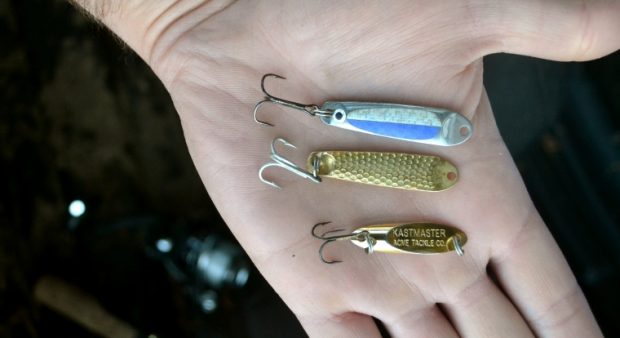
Another option is to bang a Magz Badd Boyz or Blue Fox Lil’Foxee jig off bottom, tipped with a tiny piece of minnow tail. I also like using 2.5-inch white tube jigs (downsized from trout tubes) with a stinger to increase hookups.
Essential stuff
A flasher is an absolute must. It significantly increases your effectiveness by narrowing down productive areas and ensuring you don’t spend too much time in fishless water. Watching finicky whitefish respond to a certain bait, or a variety of tactics helps you key in to what they want.
Whitefish generally hold tight to bottom, often appearing as a subtle blip on the bottom of your flasher. They will chase baits upwards, so slowly teasing the bait away from them may trigger them to chase it, possibly right to the surface, before they lose interest. Just follow them back to bottom and try again. Use zoom mode if your unit has it, so you can better see what’s going on right on bottom.
A friend of mine who’s quite a serious whitefish angler prefers a camera to a flasher. He fishes sand flats, using the camera to look for aquatic vegetation. It allows you to locate prime areas like this and see fish on the camera instead of on a flasher.
I prefer early mornings when chasing whitefish, and find the best action is in the first few hours after the sun rises. You can locate them throughout the day, but it never seems as productive. If you’re fishing shallower sandy flats (15-20 feet), they seem to actively feed early and then disperse, perhaps moving deeper as the day wears on.
When fishing with a flasher, it can be worthwhile to drill two adjacent holes, one to fish in and one for the flasher. This eliminates the need to remove the transducer to avoid tangling your line in the cable. It also helps in Lake Superior, where the current can be significant. It’s sometimes hard to see your bait on the flasher when you’re fishing near a fast-moving rivermouth. To improve your view, watch the angle of your line and drill a hole 4 to 8 feet in that direction.
Shelters
Ice shelters are a great thing to have when targeting whitefish. Aside from the obvious protection from winter extremes, they can really increase your effectiveness because in the dark confines of a shelter you can often see fish that aren’t too deep. Several areas I target have whitefish in less than 20 feet of water. In crystal-clear Lake Superior you can generally watch your bait and nothing beats directly seeing fish come in and noting how they react to your bait.
Often I’ll jig fairly aggressively until a whitefish approaches my bait, then I’ll almost let it sit, adding a slight bit of motion as it approaches. This seems to be all they need to induce them to bite, and also reduces misses when they try to hit a moving bait.
The darkened ice shelter is also great for seeing suspended fish.
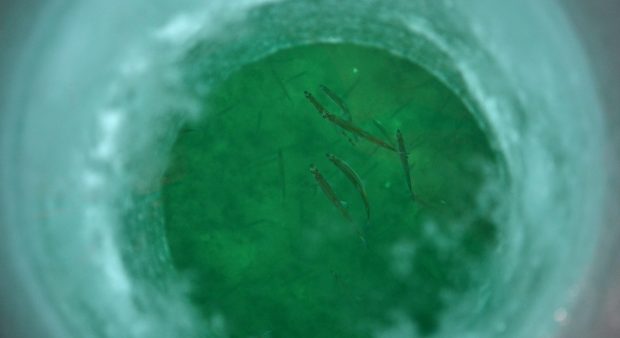
In a shelter with a partner, I like to have one person fishing on bottom and the other six feet or so below the ice. That way, when a school of whitefish comes in on bottom, as well as a suspended fish or school, you can both move to target them. It isn’t uncommon to catch several whitefish or herring at the same time when this happens.
Go long
When targeting whitefish, I like using a longer, heavier rod, at least a 32-inch medium to medium-heavy fast-action rod. I want something with some backbone for big whitefish, and especially for the incidental steelhead. A longer rod allows me to make big sweeping jigging motions with white tubes or flashy spoons, hopefully catching the eye of cruising fish.
I generally run a braided ice fishing line like Sufix 832 ice braid, in 10- to 16-pound test, tipped with a 2-foot fluorocarbon leader. One disadvantage to braid is that it freezes up in colder temperatures, which are a reality on Superior in January. Ice braids have drastically improved, but can still cause some grief on extra-cold days.
Superior safety
Ice conditions should always be a major consideration when ice fishing, and Superior is no exception. Some locations may freeze consistently year to year, while the degree to which others freeze depends on the winter. With plenty of current, rivers flowing in, and a variety of factors that smaller lakes don’t see, you need to be abundantly careful on Superior.
Another factor to consider is what you plan to bring onto the lake, as this vast, windswept waterbody often has minimal snow, and taking a snow machine miles across bare ice can be a problem. Adding ice scratchers to your sled can help, but be mindful of damaging your machine by driving it long distances on bare ice.
ATVs and UTVs can be good options if you can access the lake with them. Walking on bare ice can be risky, so strapping a pair of ice cleats onto your boots can be a lifesaver.
One neat thing about bare ice is the ability to see through it. You can often see fish coming up, and in some places can even see bottom. Admittedly, this can also be slightly unnerving.
Incidental catch
A serious bonus of Lake Superior is the multispecies bonanza that offers the chance to catch many species in one trip.
Schools of lake herring often move by throughout the day, generally 5 to 10 feet below the ice. If you see herring, reel quickly up from bottom to them; they’re usually eager to bite. They often swim frantically around for a minute or two before moving on. It isn’t uncommon for two anglers in a shelter to catch four or five herring in the minute or two before they vanish.
Lake trout are another fish you’ll see, and rainbow trout are a nice bonus. If you fish whitefish near rivermouths, steelhead will likely appear as spring gets closer.
You may also incidentally catch the odd coaster brook trout, but remember these need to be immediately released, as they are not in season during the winter.
Whitefish have a lot to offer anglers, yet are often overlooked. While they’re plentiful in Superior, they can also be found throughout the Great Lakes and in many large and small inland lakes across the province. Their numbers, eagerness to hit baits, and tender, mild, white meat are all reasons you should add whitefish to your list and do some exploring this winter.
Originally published in the Nov.-Dec 2019 edition of Ontario OUT of DOORS magazine


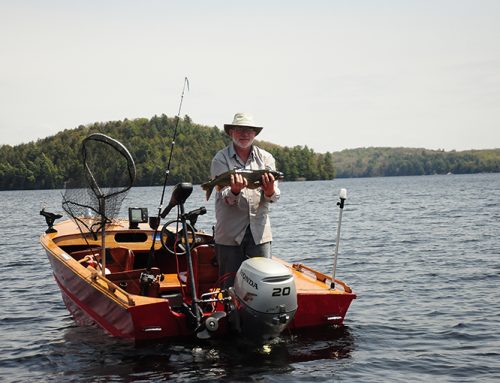
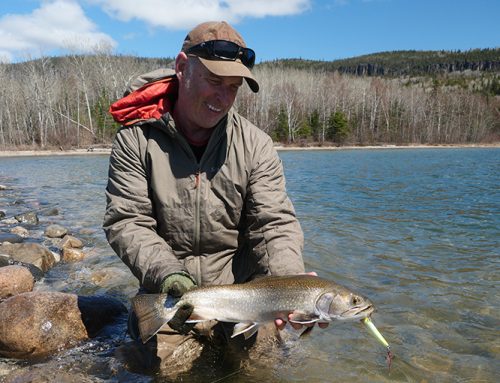
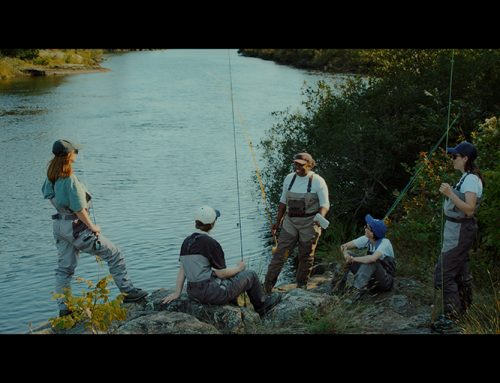

INFO FOR ICEFISHING CRAPPIE AND JUMBO PERCH ON LOW RESORTS,SLEEPERS AND OR CABIN WITH HEATED HOUSE.ALSO CONTACTS FOR WHITEFISH WITH SAME ACCOMADATIONS.
Bill,
Please see these links below:
https://oodmag.com/?s=crappie
https://oodmag.com/classifieds/